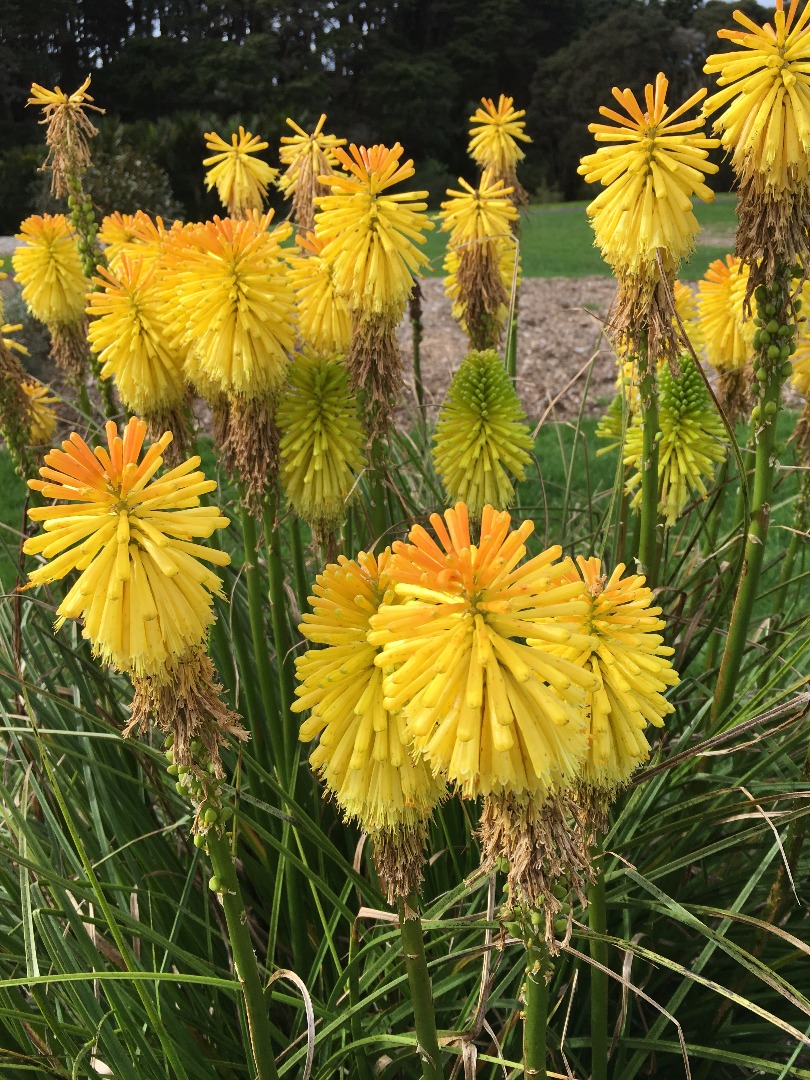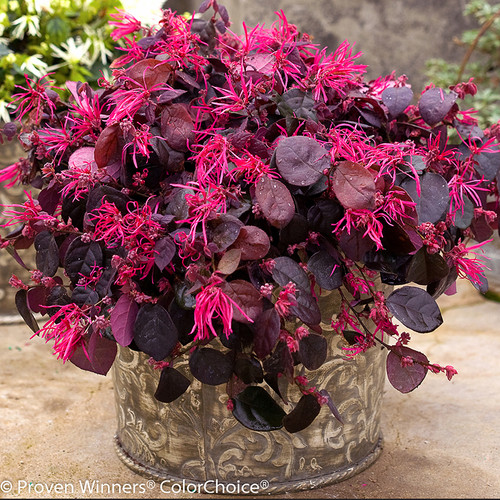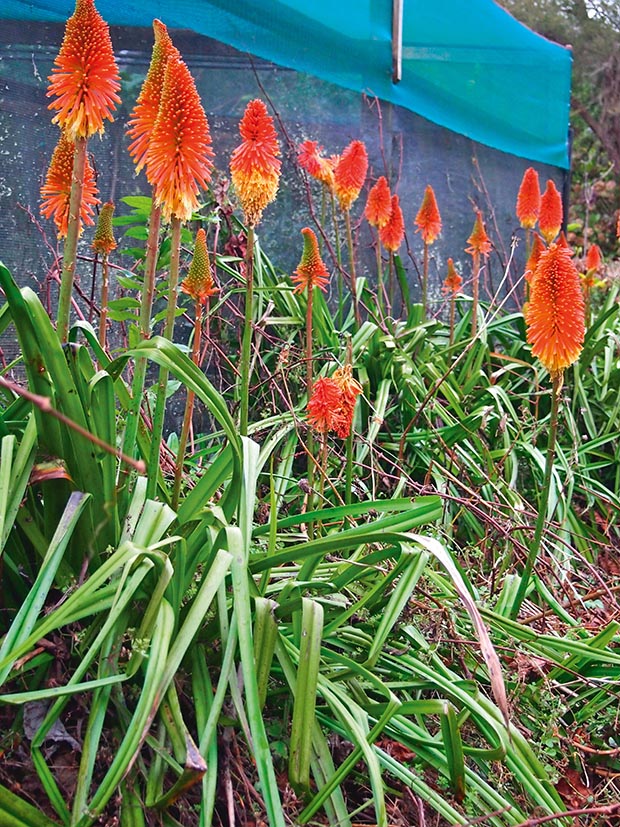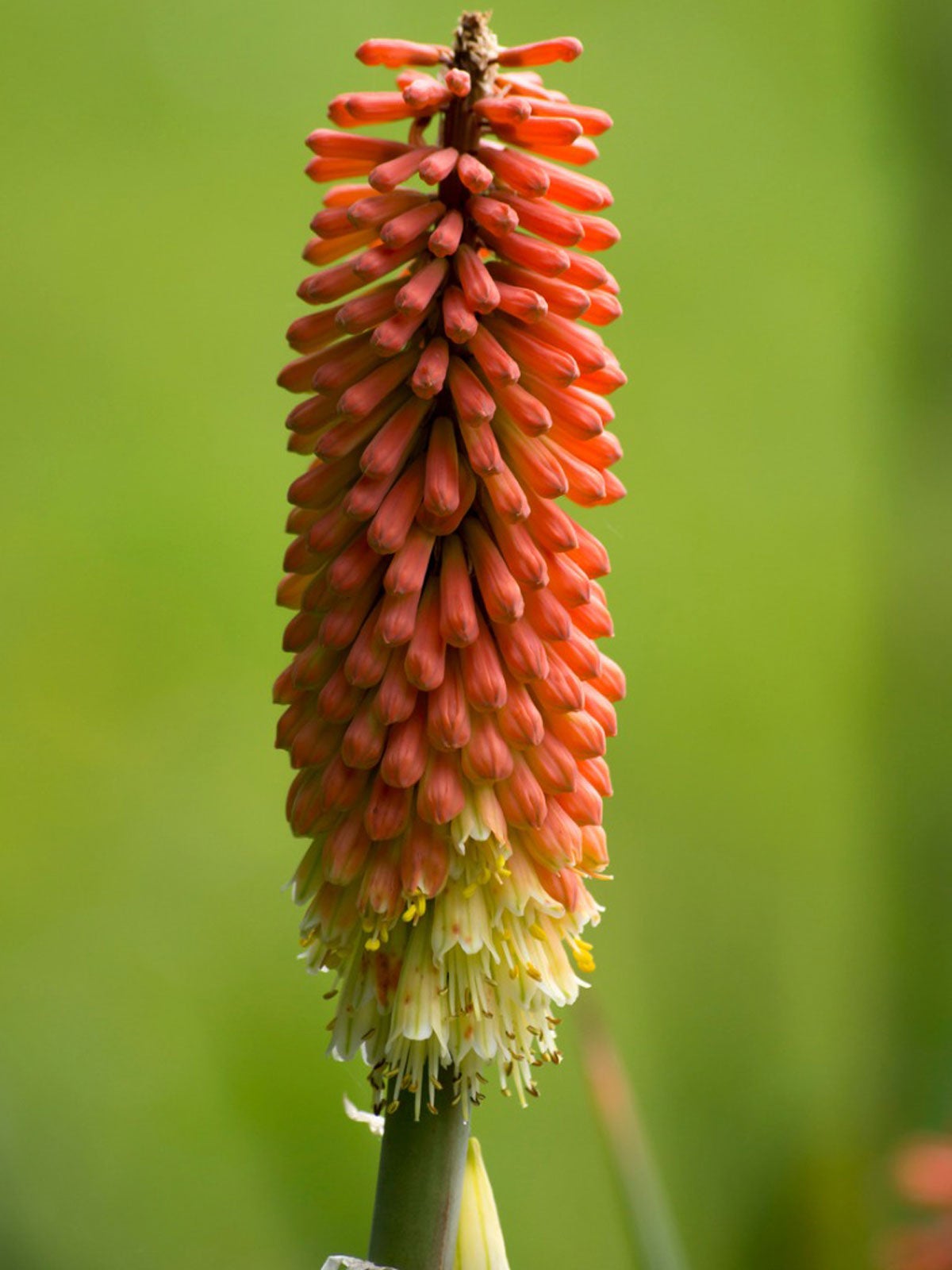Red Hot Poker Plants For Sale Nz
Plants for sale, New Zealand - TradeMe.co.nz. Satellite sites. Dwarf red hot poker Kniphofia gracilis 60cm plant $10.00. Red Hot Poker collection. Box lots of 12 strong plants in 1.5 litre hard pots. Your choice of these four varieties. Red Hot Pokers (Kniphofias) are available year round. $144/box + freight. Freight $12/box South Island, $22/box North. If you are on a Rural Delivery please add a further $5 for an RD sticker. Kniphofia (family Xanthorrhoeaceae), commonly known as red hot poker, originate from Africa. Kniphofia are fast growing perennials that prefer full sun and well-draining soil. The showy flowers attract birds and last for a long time which makes them a popular garden plant for New Zealand gardens. Low growing Poker with flowers in orange and pink shades. Likes sun and well drained soil. Common Name: (RED HOT POKER) Plant Code: KNIP BOR 140.
New takes on old favourites have added extra ‘flower power’ to tough, drought tolerant perennials
With water conservation on our minds in the post-Christmas months, it’s nice to know there are some stunning plants that will stand up to drier, hotter weather conditions and still look sensational.
There’s always a lot to do in the garden over the summer months and watering can be a labour intensive activity. But this is also the best time for alfresco entertaining, relaxing and enjoying your garden. Perennials are not only a great addition to garden borders; they also flower at a time when you are outside to appreciate them!
Here are three stunning perennial collections that will put on a lovely display, even if they get a little dry between drinks.
Little Hot Pokers
Flowers don’t come much tougher than the Red Hot Poker. The trouble is that at full size they are often too large for the average border and can get quickly out of hand.
Not so the new Dwarf Kniphofias, ‘Ember Glow’, ‘Fire Glow’ and ‘Pineapple Popsicle’. These diminutive hotties flower profusely on spikes just 50-65cm tall, and repeatedly bloom from spring right through to autumn.
Native to Africa, Kniphofias, also known as Red Hot Pokers or Torch Lilies, are drought tolerant, thrive even in relatively poor soils, and produce good amounts of nectar attracting birds when in flower. A well-drained, sunny position is the preferred habitat for these hardy beauties.
Dwarf Kniphofias are compact and just like their larger relatives, form clumps so they can be divided when fully established. Removing spent flower stems to ground level can improve plant appearance. These new varieties continue to send up further flower spikes over a far longer period than is usual for kniphofias.
Dwarf varieties ‘Fire Glow’ ‘Ember Glow’ and ‘Pineapple Popsicle’ are the first in a series of new release Kniphofias from the Living Fashion range.
Gaillardias
Also known as the ‘Carpet Flower’, the Gaillardia is a native of North and South America, and is related to the Sunflower family (Asteraceae). Renowned for their intricate patterns in rich reds and golds, these plants are also known as ‘Blanket Flowers’ after the brightly coloured blankets made by the indigenous people of the region.
Gaillardias are tolerant of poor soils and dry or even coastal soil conditions, and are relatively fast to establish. Two new Gaillardias have been released this season, Gaillardia ‘Red Sun’ and Gaillardia ‘Sun Flare’.
Gaillardia ‘Red Sun’ is a striking new hybrid with hot orange-red sun-like flowers massed over a compact foliage mound of green leaves. Gaillardia ‘Sun Flare’ features gold fluted flowers with a central red ‘eye’ massed over a compact foliage mound of silvered leaves. The seed head of ‘Sun Flare’ is also rather appealing, with a fuzzy appearance. Both of these varieties flower for up to six months from late spring through autumn, providing eye-catching and extended summer colour.
Sedums

Sedums, also known by the common name of stonecrops provide fabulous border effects, both with their foliage and their flowers. In spring, the foliage makes a great accent among earlier flowering perennials, and then the sedum flowers take the limelight throughout summer and autumn.
New releases this year to add to your Sedum collection are ‘Chocolate Drop’ for those who love chocolate foliage and ‘Crystal Pink’, which has a delicate, almost ice pink colour, that is very appealing in the garden bed. Their compact habit ensures these Sedums stay in good shape in the border as well as flowering ‘their socks off’. Recent releases ‘Mr Goodbud’ and ‘Hot Stuff’ also boast tremendous flowering performance.
Like all succulents, sedums store moisture in their leaves as a survival mechanism. Some attention to watering is needed initially but, once established, sedums are extremely happy with minimal watering.
For more information visit www.LivingFashion.co.nz
Introduction
Kniphofia (family Xanthorrhoeaceae), commonly known as red hot poker, originate from Africa. Kniphofia are fast growing perennials that prefer full sun and well-draining soil. The showy flowers attract birds and last for a long time which makes them a popular garden plant for New Zealand gardens.
The aim of this trial was to identify the top performing Kniphofia species or cultivars for Auckland conditions. These would also be added to the African Garden at Auckland Botanic Gardens. The key objective was to identify long flowering Kniphofia with clean foliage that are relatively resistant to snail and thrip damage and black spot.
Methods
Kniphofia were planted 26th November 2013. Several additions to this trial were planted in autumn 2014. Kniphofia require plenty of space and were 40 cm apart. All twenty-one Kniphofia cultivars were represented by three individuals, but only one each of the five Kniphofia species were planted.
Plants were grown in full sun, bark mulch and no fertiliser was applied at time of planting. Management of plants during the trial included one late winter cut back of two out of three of the cultivars, leaving the third plant as a comparison for their growth response following the cut back (mid-August 2014). Deadheading occurred only when seeds turned brown.


Plants were assessed quarterly during flowering for pest and disease, specifically snail and thrip damage and black ink spot (Fig 1). Flowering was recorded weekly for development of buds, flowers and seeds. Overall size of the plant was measured for across the widest part of the foliage of all three plants then averaged. We also measured foliage height (cm) from the base of plant to highest point of foliage three plants then averaged. External evaluations were conducted in December 2014 and March 2016. This trial ran for three years and concluded at the end of July 2016.
Figure 1 Black ink spot on foliage of Kniphofia infecting foliage and stems
Results and conclusions
From this trial, five cultivars were assessed as star performers by scoring an 8 or higher on the ABG rating system which is the threshold above which we recommend to Auckland gardeners (Table 1). They had long flowering periods and were relatively pest and disease free. Species were included in this trial as a comparison with commercially available cultivars. Their performance was variable although some scored a high rating. They are excluded from our list of recommendations as they are not generally commercially available. Star performers and species are now displayed in the ABG African Garden. All cultivars recommend are commercially available. Four cultivars in this trial (K. ‘Ernest Mitchell’, K. ‘Winter Cheer’, K. ‘Shining Sceptre’ and K. ‘Pineapple Popsicle’) scored very highly in all categories but because they scored more than 25% black ink spot their overall rating was dropped.
Kniphofia | Flowering & colour | Clump diameter by height (cm) | Habit/use | Overall rating |
K. ‘Border Ballet’ | Oct to May. Peak flowering mid-Dec. Mixed flower colours | 15 x 26 | Deciduous, compact, clump forming. | 6 |
K. ‘Butterscotch’ | March to June. Yellow flower | 34 x 67 | Large, tall evergreen perennial | 8 star performer |
K. ‘Charles Reader’ | Mid-march to Dec. Peak flowering June. Orange/yellow flowers. | 44 x 80 | Suitable for a back border, very vigorous. Evergreen | 8 star performer |
K. ‘Coral Comet’ | March to May. Peak flowering Dec. Deep orange flowers | 35 x 47 | Tidy, evergreen perennial | 9 star performer |
K. ‘Ember Glow’ | Jan to March. Orange flower | 26 x 32 | Deciduous, dwarf perennial | 6 |
K. ‘Ernest Mitchell’ | Mid-August to Dec. Yellow flower | 33 x 58 | Evergreen, robust perennial | 7 |
K. ‘Fireglow’ | Mid-Nov-May. Orange flower | 20 x 30 | Deciduous, dwarf perennial | 7 |
K. ‘Green Jade’ | Did not flower during this trial | 13 x 25 | Deciduous perennial | 4 poor performer |
K. ‘John May’s Form’ | Very sporadic flowering and few flower stems. Orange/yellow flowers. | 36 x 36 | Caulescens type. Evergreen | 5 poor performer |
K. ‘Lemon Fizz’ | Jan to April, Aug to Dec. Peak flowering Dec. Lemon yellow flowers. | 37 x 52 | Sparse foliage. Semi-deciduous | 7 |
K. ‘Little Maid’ | Dec to early May. Peak flowering March. Yellow flowers. | 19 x 22 | Very small, dwarf. Suitable for front border. Deciduous | 4 |
K. ‘Orangeade’ | Sept to June. Peak flowering late Dec. Pale orange flowers. | 32 x 40 | Tidy foliage. Evergreen | 6 |
K. ‘Peachy Cheeks’ | Nov to March. Peak flowering late Dec. Peach to yellow flowers. | 15 x 25 | Deciduous dwarf perennial with fine foliage | 5 |
K. ‘Percy’s Pride’ | March to May, mid-Oct to Dec. Yellow flower | 32 x 71 | Evergreen | 8 star performer |
K. ‘Pineapple Popsicle’ | Nov to March. Peak flowering Dec. Yellow flowers. | 27 x 47 | Compact, upright clump forming evergreen perennial | 7 |
K. ‘Shining Sceptre’ | March to May, Sept to Dec. Pale orange flowers | 44 x 58 | Compact, arching foliage. Evergreen | 7 |
K. ‘Tangerine’ | Sept to May. Peak flowering Nov to Dec. Vibrant orange flowers | 27 x 59 | Semi-deciduous | 8 star performer |
K. ‘Tawny King’ | Sept to Dec. Orange flowers. | 44 x 60 | Evergreen | 6 |
K. ‘Terracotta’ | Oct to Dec. Peak flowering Nov. Vibrant orange flowers. | 27 x 113 | Deciduous | 7 |
K. ‘Tiddlywinks’ | Jan to May, Nov to Dec. Red flowers. | 26 x 38 | Small. Deciduous | 6 |
K. ‘Winter Cheer’ | June. Red flowers. | 45 x 60 | Massive border plant. Semi-deciduous | 7 Important for cultivar conservation |
K. caulescens | n/a flowering. Red to yellow flowers. | n/a | Large, tall evergreen species | 8 not commercially available |
K. gracilis | Aug to Dec. Gold flowers. | 34 x 63 | Semi-deciduous | 7 |
K. hirsuta | Nov to Dec. Green and orange flowers. | 38 x 53 | Very tall evergreen species | 8 not commercially available |
K. linearifolia | March to April. Orange to yellow flowers. | 27 x 45 | Evergreen | 8 not commercially available |
K. rooperi | August. Yellow/orange flowers. | 73 x 79 | Large, tall evergreen species | 8 not commercially available |
Kniphofia caulescens died early on in this trial, therefore no flowering records and plant size data is reported here. K. ‘Peachy Cheeks’ supplied might not have been correctly named as flowers were yellow rather than peach. Plants of K. ‘Green Jade’ did not do well with two plants dying before the end of the trial and not flowering.
Snail damage was noticed in mid-October on almost all cultivars but plants quickly recovered from damage. Kniphofia were relatively tolerant of frost, and many are deciduous. All Kniphofia in this trial had signs of black ink spot at some stage during the trial. Most Kniphofia in this trial had less than 25% of the plant affected by black ink spot (Fig 2).
Figure 2 Average percentages of black ink spot (2015-2016) on Kniphofia in ABG trial
Kniphofia are renowned for crossing and seeding out in gardens, therefore we recommend deadheading regularly after flowering but before seeds ripen. We pruned plants back in mid-winter and they grew back well. A late prune results in reduced flowering however this promotes healthy, clean foliage.

Acknowledgements
Red Hot Poker Plants For Sale Nz Craigslist
We would like to thank our external experts for helping evaluate this trial.
Red Hot Poker Plants For Sale Nz Uk
This article cannot be republished elsewhere without consent from Auckland Botanic Gardens.